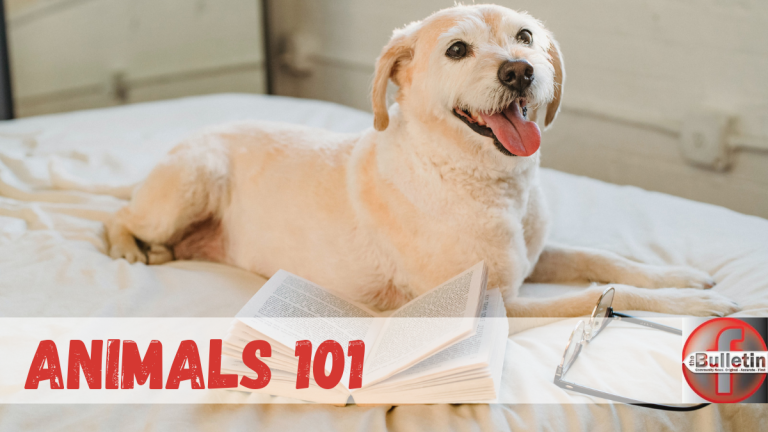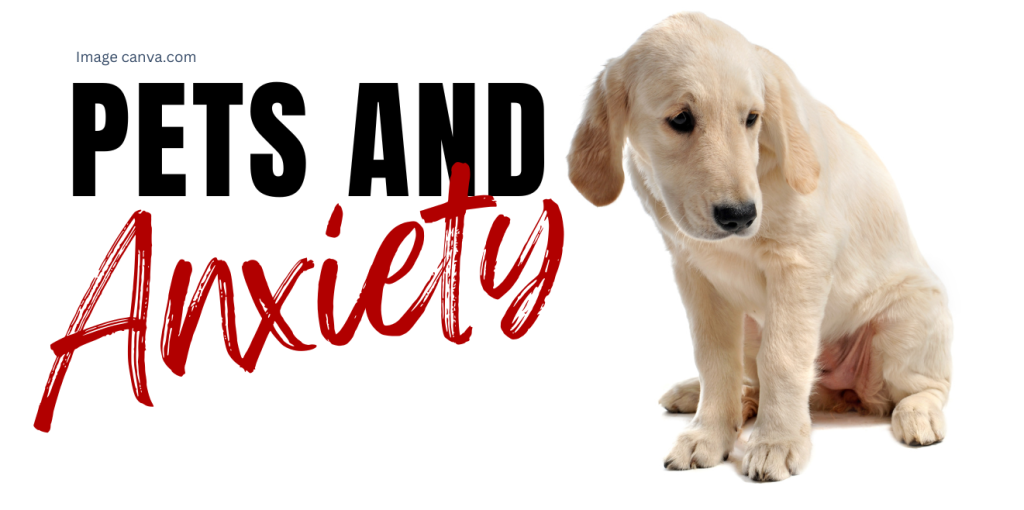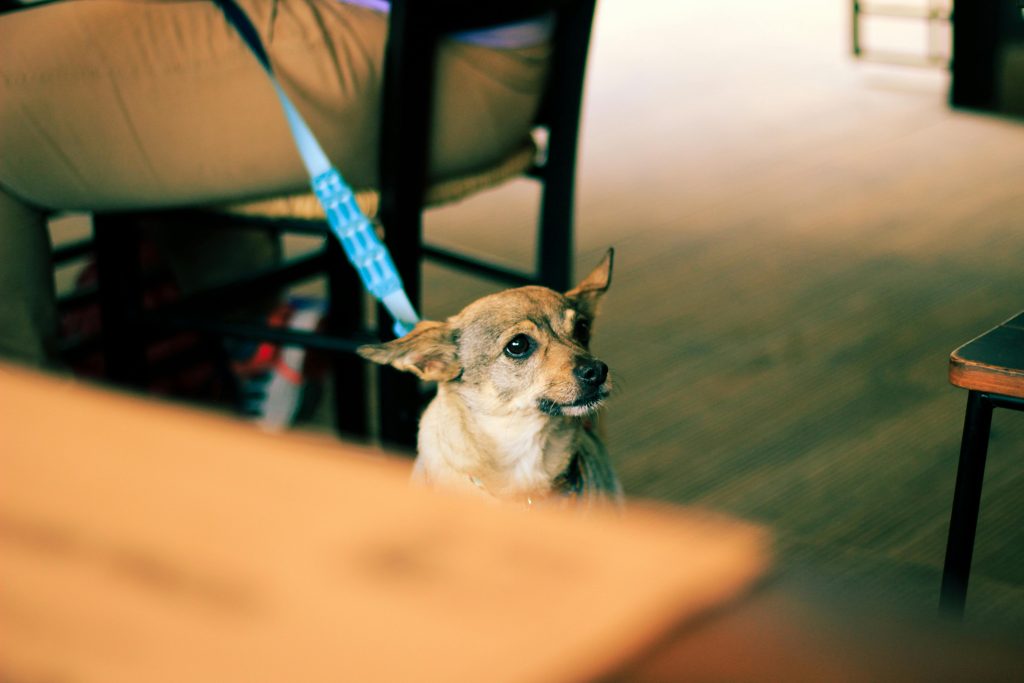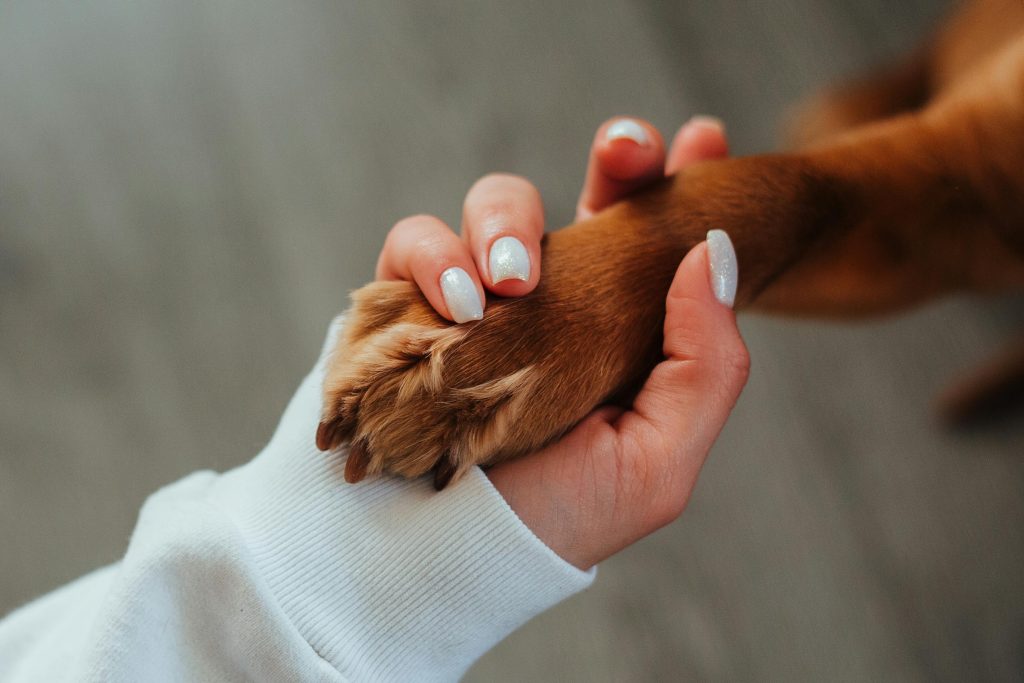
HOW TO HELP YOUR FURRY FRIEND FEEL SAFE AND SECURE
WHAT IS PET ANXIETY?
Pet anxiety refers to a state of unease or fear that pets experience in response to certain situations. It can manifest as physical, behavioural, or emotional symptoms. While some anxiety is normal, especially in new or unfamiliar environments, excessive or chronic anxiety can be harmful to your pet’s health.

COMMON TYPES OF PET ANXIETY
There are various types of anxiety that pets may experience, each with its own triggers and symptoms. The most common types include:
- Separation Anxiety: This is when pets become distressed when left alone or separated from their primary caregiver. It often leads to behaviours such as destructive chewing, excessive barking, and accidents in the house.
- Noise Anxiety: Many pets are fearful of loud noises, such as thunderstorms, fireworks, or even vacuum cleaners. This can cause your pet to hide, shake, or become overly agitated.
- Travel Anxiety: Some pets may become anxious during car rides or trips to the vet, which can lead to drooling, vomiting, or panting excessively.
- Generalized Anxiety: This refers to anxiety that is not necessarily triggered by a specific event but rather an overall sense of fear or unease in different situations, such as around strangers or in new environments.
SIGNS OF ANXIETY IN PETS
Recognizing the signs of anxiety in pets is essential for addressing the issue early. Common signs of anxiety in pets include:
- Excessive Barking or Meowing: A pet that barks or meows incessantly, especially when you’re not around, may be suffering from separation anxiety.
- Destructive Behaviour: Pets with anxiety may chew furniture, scratch walls, or destroy items in your home as a way of coping with their stress.
- Excessive Grooming: Cats and dogs may excessively lick or groom themselves when anxious, leading to bald patches or irritated skin.
- Restlessness: An anxious pet may have difficulty settling down or may pace around the house in an attempt to relieve their anxiety.
- Panting and Shaking: Some pets show physical signs of anxiety, such as panting, drooling, or trembling, even when they’re not exerting themselves.

CAUSES OF PET ANXIETY
Several factors can contribute to anxiety in pets. Some of the most common causes include:
- Past Traumas: Pets that have experienced abuse or neglect may develop anxiety due to the trauma they endured. These pets may be particularly fearful of certain situations or people.
- Changes in Routine: Pets thrive on routine, and any significant changes in their environment, such as moving to a new home, a change in their owner’s schedule, or the arrival of a new pet or baby, can cause anxiety.
- Lack of Socialization: Pets that haven’t been properly socialized, especially during their formative months, may develop anxiety when exposed to unfamiliar situations or people.
- Genetics: Certain breeds are more predisposed to anxiety than others. For example, small dog breeds like Chihuahuas and Dachshunds are more prone to anxiety-related behaviors.
- Health Issues: Physical health problems, such as chronic pain or hormonal imbalances, can contribute to anxiety in pets.
MANAGING AND TREATING PET ANXIETY
1. Create a Safe Space. Providing a safe and quiet space for your pet to retreat to can help them feel secure when they’re feeling anxious. This could be a crate, a designated room, or a comfortable bed in a low-traffic area of the house. Having a safe space where they can relax and retreat from stressful stimuli can reduce anxiety.
2. Provide a Consistent Routine. Consistency is key when it comes to helping your pet feel secure. Keep feeding times, walks, and playtimes on a regular schedule so your pet knows what to expect. A predictable routine can reduce anxiety and create a sense of calm.
3. Training and Positive Reinforcement. Training your pet to associate certain situations with positive experiences can help reduce anxiety. For example, if your dog is afraid of being left alone, practice leaving them alone for short periods and gradually increase the time. Reward them with treats and praise when they remain calm. Similarly, for noise anxiety, use positive reinforcement when they remain calm during thunderstorms or fireworks.
4. Desensitization and Counterconditioning This technique involves gradually exposing your pet to the anxiety-triggering situation in a controlled and positive way. For instance, if your pet is afraid of car rides, start by taking them on short, calm trips and rewarding them for staying calm. Gradually increase the duration and frequency of trips as they become more comfortable.
5. Use of Anxiety-Relief Products There are several products available that can help alleviate anxiety in pets, including:
- Thundershirts: These pressure wraps provide gentle, constant pressure around your pet’s body, which can have a calming effect.
- Calming Pheromones: Synthetic pheromone products mimic the calming scent that mother animals produce to reassure their young. These can be used in sprays, diffusers, or collars.
- Anxiety-Relief Supplements: Natural supplements like CBD oil, valerian root, or chamomile can help reduce anxiety in pets. Always consult your veterinarian before using any supplement to ensure it’s safe for your pet.
6. Professional Help. In some cases, professional help may be necessary to manage your pet’s anxiety. A behaviourist (not trainer) or your veterinarian may recommend behavioural therapy or medication to address severe anxiety. Medications such as anti-anxiety drugs or antidepressants may be prescribed for pets with chronic or severe anxiety.

Also, see here if you are a responsible pet guardian.
Did you know pets can also get PTSD?
Dogs can develop post-traumatic stress disorder (PTSD). Canine PTSD can be caused by a range of traumatic experiences, including military or police work, life in a puppy mill, severe abuse, attacks by other dogs, or distressing experiences in a veterinary ICU. The symptoms often mirror those seen in humans and may include hypervigilance, disturbed sleep, and separation anxiety or fear of being alone. While a full cure is often not possible, PTSD in dogs can usually be managed through consistent retraining and behavior therapy, helping them regain a sense of safety and stability in the world.
Pet anxiety is a common issue, but with the right strategies and interventions, it can be effectively managed. Understanding the signs of anxiety, identifying potential causes, and using positive reinforcement, along with products designed to alleviate stress, can go a long way in helping your pet feel secure. If your pet’s anxiety persists or worsens, don’t hesitate to consult with your veterinarian and behaviourist to create a tailored treatment plan. By being patient and proactive, you can help your pet lead a more relaxed and happier life.
Join us next week to explore and learn more about the amazing animals who share our world!
WHEN YOU KNOW BETTER, DO BETTER!
Disclaimer: I am not a qualified behaviourist. I share what I have learned through the years from qualified veterinarians, trainers, and behaviourists. Please consult with your vet and behaviour professionals when your pet is experiencing anxiety-like symptoms.
[…] read more on pets and […]